Return to Scouters' Pages Home

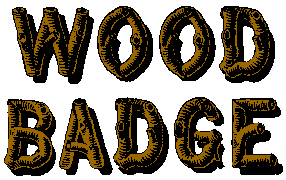
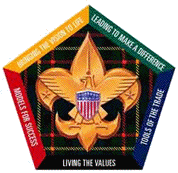
Wood Badge for the 21st Century has been developed for Cub Scout, Boy Scout, Varsity Scout and Venturing Leaders, as well as council and district leaders. The course content and leadership principles introduced apply to Scouters in all leadership positions and will provide a common foundation of leadership skills to be used throughout all program areas.
![]()

In 1911, Baden-Powell took the first steps in training Scouting's adult leaders by organizing a series of lectures for Scouters. He made great strides in the years that followed, culminating in 1919 with the establishment of Wood Badge training. Wood Badge recipients now number more than 100,000 and can be found in all corners of the world.
The 21st Century Wood Badge course brings together leaders from all areas of Scouting - Cub Scouts, Boy Scouts, Varsity Scouts, Venturing, and all levels of BSA's professional staff. Reflecting the best of nearly a century of Scouting experience, 21st Century Wood Badge also draws upon the most current leadership models being used by corporate America, academic circles, and successful outdoor leadership organizations throughout the country.
The Wood Badge course is designed to represent a month in the life of a Scout unit, with participants entering as Cub Scouts, then bridging into Boy Scouting to form patrols for the remainder of the program. Selected staff members will interact with participants as a Venturing crew. Participants will take part in numerous presentations,discussions, and activities that explore and advance a wide range of leadership philosophies and tools. In addition to all the opportunities for learning at a Wood Badge course, participants will find a tremendous amount of fellowship, a keen sense of accomplishment, and plenty of fun. 21st Century Wood Badge should:
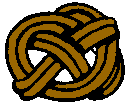 Themes
of Wood Badge For The 21st Century
Themes
of Wood Badge For The 21st CenturyWood Badge has five Central Themes:
The themes that follow encapsulate the course content of Wood Badge for the Twenty-First Century.
[return to top] [return to index]

Wood Badge consists of two phases. The first is the practical phase. This consists of two full weekends at camp plus two midweek patrol meetings between the weekends. The second, or application phase, occurs after the weekends and consists of "working your ticket".
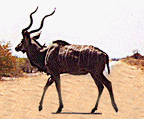
As part of the practical course you create a plan to put the leadership skills in action, called a "Ticket". In Baden-Powell's day, those in the military were expected to pay their own way back to England at the end of their service. To economize, soldiers nearing completion of their duties would seek assignments at posts increasingly close to home - a process known as "working your ticket." During the second part or application phase, you will have a period of 6 to 18 months to "Work Your Ticket."
The primary purpose of the Wood Badge experience is to strengthen Scouting in our units, districts, and local councils. The Wood Badge "ticket" represents your commitment to complete a set of personal goals relating to your Scouting position. These goals will significantly strengthen the program in which you are involved. In addition, the ticket gives you an opportunity to practice and demonstrate a working knowledge of the leadership skills presented during the course. You should complete your Wood Badge ticket no later than 18 months after the course. When completed, you will have earned your Wood Badge beads, woggle, and neckerchief.
[return to top] [return to index]
 In
1911, 4 years after Scouting began in Great Britain, General Baden-Powell began training Scouters
through a series of lectures. In 1919, Mr. W. de Bois Maclaren
purchased an estate in Epping Forest, near London, called Gilwell
Park and presented it to the Scouting movement. On the morning
of September 8, 1919, the 61 year-old retired general of the
British Army, General Baden-Powell, stepped out into the center
of a clearing at Gilwell Park. He raised to his lips the horn
of a Greater Kudu, one of the largest of African antelopes.
He blew a long sharp blast. Nineteen men dressed in short pants
and knee socks, their shirt-sleeves rolled up, assembled by patrols
for the first Scoutmasters' training camp held at Gilwell. The
camp was designed and guided by Sir Robert Baden-Powell, the founder of the
World Scouting Movement.
In
1911, 4 years after Scouting began in Great Britain, General Baden-Powell began training Scouters
through a series of lectures. In 1919, Mr. W. de Bois Maclaren
purchased an estate in Epping Forest, near London, called Gilwell
Park and presented it to the Scouting movement. On the morning
of September 8, 1919, the 61 year-old retired general of the
British Army, General Baden-Powell, stepped out into the center
of a clearing at Gilwell Park. He raised to his lips the horn
of a Greater Kudu, one of the largest of African antelopes.
He blew a long sharp blast. Nineteen men dressed in short pants
and knee socks, their shirt-sleeves rolled up, assembled by patrols
for the first Scoutmasters' training camp held at Gilwell. The
camp was designed and guided by Sir Robert Baden-Powell, the founder of the
World Scouting Movement.

When they had finished their training together on September 19, 1919, Baden-Powell gave each man a simple wooden bead from a necklace he had found in a deserted hut of Zulu chieftain Dinizulu when on campaign in South Africa in 1888. The Scoutmasters' training course was a great success and continues to be held year-after-year. At the end of each course the wooden beads are used to recognize the completion of training. When the original beads ran out, new ones were whittled to maintain the tradition established by Lord Baden-Powell. Because of these beads, the course came to be known as the Wood Badge Course. It continues to this day in England and around the world as the advanced training course for leaders in Scouting.
In 1936, an experimental Wood Badge Course was conducted in the United States at the Schiff Scout Reservation. Then in 1948, the first American Wood Badge Course was introduced in the United States as advanced training for trainers of Boy Scout leaders. Later, the program was extended to include troop committee members, commissioners, and Explorer leaders.
Experiments began in the late 1960's with a leadership development Wood Badge course emphasizing 11 leadership skills or "competencies." This program was launched in 1972 in support of a major revision of the Boy Scout phase program. The first experimental Cub Scout Trainer Wood Badge was field tested in 1976 and has now been established as the official advanced training program in Cub Scouting. In 1978, an evaluation of Boy Scout Leader Wood Badge revealed a need for greater emphasis on the practical aspects of good troop operation, mixed with a variety of leadership exercises. The course content was revised in 1994 to incorporate key elements of Ethics in Action. In 2001 Wood Badge was developed for ALL LEADERS in the Cub Scout, Boy Scout, Varsity Scout and Venturing Programs, in addition to council and district leaders. This course replaced Boy Scout Leader Wood Badge and Cub Scout Trainer Wood Badge.
The two most important changes are:
[return to top] [return to index]
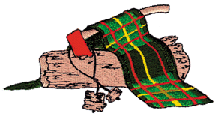 Recognition
RecognitionUpon completion of the Wood Badge ticket, as certified by a ticket counselor and the Scout executive, you will be presented with the Wood Badge certificate, neckerchief, woggle, and beads at an appropriate public ceremony.
The beads of Dinizulu on a leather thong, a neckerchief with Maclaren tartan, and the woggle "made from the never ending leather thong" are presented when the Wood Badge "ticket" is completed. Scouters all over the world proudly wear the neckerchief, woggle, and beads of Wood Badge trained leaders. Ever since it was begun by Baden-Powell in England in 1919, Wood Badge training has represented the finest tradition of the founder and carries with it great prestige. Wood Badge is a great force for the world brotherhood and the heritage of Baden-Powell and Gilwell Park.
Many Scouters consider Wood Badge to be one of the highlights of their Scouting careers. It has served as a source of training and inspiration to thousands. In return, Wood Badge participants have positively affected the lives of millions of America's youth.
[return to top] [return to index]
The last verse is called the Burnham Patrol Verse. This verse
is dedicated to the memory of Green Bar Bill Hilcourt. It was
written and introduced at Wood Badge course NE-IV-64 held at
the Hawk Mountain Scout Reservation in 1993 by the Course Scoutmaster,
Earl P. Moyer, a Clark.
The cartoon is by Sal Sepulveda, Jr.
[return to top] [return to index]